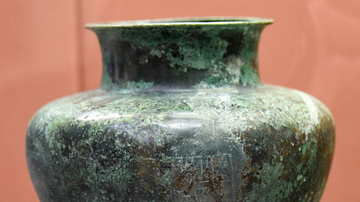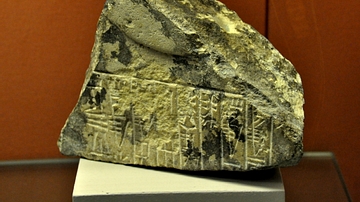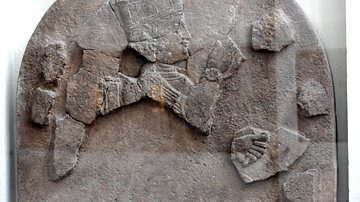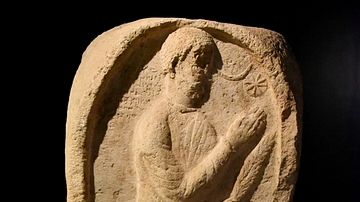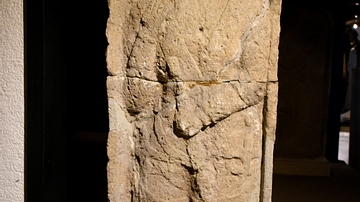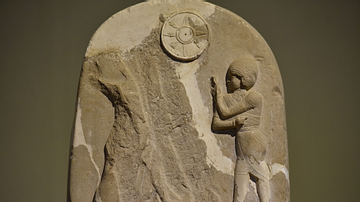Illustration
Stela of the Assyrian king Shamshi-Adad V (r. 824-811 BCE), from Nimrud (ancient Kalhu), modern-day northern Iraq, Neo-Assyrian Empire, 824-811 BCE.
It depicts the king, before the symbols of his principal gods. He extends his right hand, with the forefinger outstretched as if he has just snapped his fingers. This is the typical Assyrian gesture of respect and supplication towards the gods. The gods could be worshipped in symbolic form and here represent (from top to bottom) the gods Ashur, Shamash, Sin, Adad, and Ishtar. The king wears a large Maltese cross on his chest as an alternative symbol of Shamash, god of the sun and justice.
The image is unusual, as the king wears his beard in a strange archaic style, and the cuneiform text is written in an artificial antique script. Shamshi-Adad was keen to stress his legitimacy because he had been forced to fight for the throne against a rebellion, probably led by his elder brother.
About the Author
Cite This Work
APA Style
Amin, O. S. M. (2014, February 12). Stela of King Shamshi-Adad V. World History Encyclopedia. Retrieved from https://www.worldhistory.org/image/2293/stela-of-king-shamshi-adad-v/
Chicago Style
Amin, Osama Shukir Muhammed. "Stela of King Shamshi-Adad V." World History Encyclopedia. Last modified February 12, 2014. https://www.worldhistory.org/image/2293/stela-of-king-shamshi-adad-v/.
MLA Style
Amin, Osama Shukir Muhammed. "Stela of King Shamshi-Adad V." World History Encyclopedia. World History Encyclopedia, 12 Feb 2014. Web. 15 Apr 2025.



